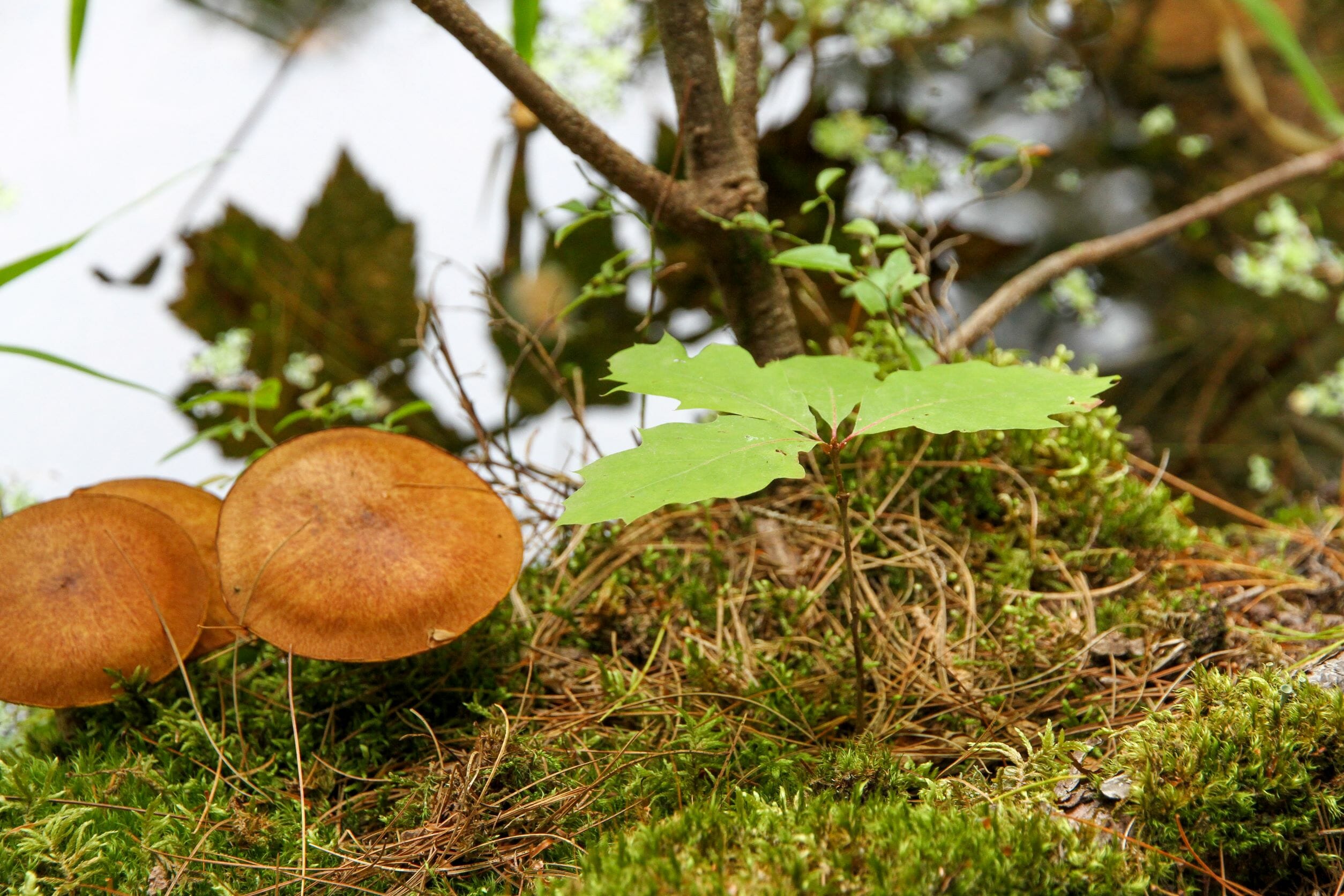How might climate change affect the Wabanaki forest?
By Monica Allaby, Posted on October 7, 2021
The Wabanaki forest—also referred to as the Acadian forest—roughly spans Wabanakik, a region that encompasses the Gaspé Peninsula of Quebec, New Brunswick, Nova Scotia, Prince Edward Island, and parts of New England. This unique forest type is an eco-region transition zone, boasting tree species found in both the boreal forest, to the north, and the northern hardwood forest, to the south. This unique diversity creates a beautiful mixed-wood forest supporting a rich diversity of life and livelihoods—but also leaves it more vulnerable to changes in the climate because some species are at their range limits; that is, they are occurring as far north or south as they can tolerate.[i]
Changes to Forest Composition and Growth
The climate is warming, and for the Wabanaki forest, this means that boreal tree species are likely to suffer. Species like balsam fir and white spruce, which are characteristic of the boreal forest and prefer cool temperatures, are predicted to decrease in growth and abundance because they are at their southernly range limit. Conversely, southernly species—also called temperate species—like sugar maple and red oak may benefit from a warmer climate.[ii][iii]
Rising temperatures will also likely decrease soil moisture and make it difficult for boreal species to compete with temperate species, which are expected to be able to better adapt due to their southernly affiliation.[iv] Research from the Canadian Forest Service predicts that the Wabanaki forest will experience a decrease in overall forest growth, and we will likely see a shift in the overall composition of the Wabanaki forest towards more temperate species by 2050.[v]

What do these changes mean for the Wabanaki forest?
Diversity helps reduce landscape vulnerability to natural disturbances. Unfortunately, we have lost a lot of the age class and species diversity of the Wabanaki forest since colonization.[vi] There is very little forest left in pre-colonial condition, and the amount of forest older than 100 years is estimated to be only 1-5% of the forest cover.[vii] Today’s forest has shifted towards predominantly young, even aged, and early successional forest types. In particular, the frequency of balsam fir and white spruce have increased—the same boreal species that are not predicted to fare well in a changing climate.[viii] This means the forests across Wabanakik today are less able to adapt to climate change.
Unfortunately, scientists do not think that the gains in temperate species will be able to keep up with the loss of boreal species, and this may lead to decreases in wood supply, impacting livelihoods and the region’s economy. [ix] Wolastoqey and Mi’kmaq communities have also highlighted how climate change is impacting their traditions and livelihoods including foraging for forest medicines and basket making and other traditional artisanship that rely on forest products.
Helping the Wabanaki forest adapt
At Community Forests International, we are working with forest ecologists and silviculturists to develop climate-adaptive silviculture prescriptions for the Wabanaki forest. Silviculture prescriptions offer a series of treatments designed to alter the composition of a forest or its stand structure based on a management goal. Climate-adaptive silviculture prescriptions, therefore, help landowners nurture a forest condition that reduces vulnerability to climate change. Specifically, in the Wabanaki forest, this means favouring those temperate species that are predicted to benefit from a changing climate. It’s important to remember that while science will continue to offer new insights into the effects of climate change, promoting composition and structure complexity—for example, through age class or tree species diversity—is one of the most important ways you can reduce the vulnerability of your forest.[x]
Keep Learning
Explore how climate-adaptive forest management can help the Wabanaki forest thrive for generations to come. Forest owners and professionals can take a look at our silviculture tools and resources and watch our 3-part video series, Our Changing Forest.
Further Reading
[i] Fisichelli, N.A., Frelich, L.E. and Reich, P.B. (2014), Temperate tree expansion into adjacent boreal forest patches facilitated by warmer temperatures. Ecography, 37: 152-161.
[ii] Taylor, A., Boulanger, Y., Price, D., Cyr, D., McGarrigle, E., W., Rammer and J. Kershaw. (2017). Rapid 21st century climate change projected to shift composition and growth of Canada’s Acadian Forest Region. Forest Ecology and Management, 405: 284-294.
[iii] Bourque, C., & Hassan, Q.K. (2008). Projected impacts of climate change on species distribution in the Acadian Forest region of eastern Nova Scotia. The Forestry Chronicle. 84(4): 553-557.
[iv] Reich, P., Sendall, K., Rice, K. et al. Geographic range predicts photosynthetic and growth response to warming in co-occurring tree species. Nature Clim Change 5, 148–152 (2015).
[v] Taylor, A., Boulanger, Y., Price, D., Cyr, D., McGarrigle, E., W., Rammer and J. Kershaw. (2017). Rapid 21st century climate change projected to shift composition and growth of Canada’s Acadian Forest Region. Forest Ecology and Management, 405: 284-294.
[vi] Noseworthy, J., & Beckley, T.M. (2020). Borealization of the New England – Acadian Forest: a review of the evidence. Environmental Reviews, 28, 284-293.
[vii] Mosseler, A., Lynds, J., & Major, J.E. (2003). Old-growth forests of the Acadian Forest Region. Environmental Reviews, 11, 47-77.
[viii] Loo, J., & Ives, N. (2003). The Acadian forest: Historical condition and human impacts. Forestry Chronicle, 79, 462-474.
[x] Messier, Christian & Puettmann, Klaus & Coates, K. (2013). Managing Forests as Complex Adaptive Systems: Building Resilience to the Challenge of Global Change.
